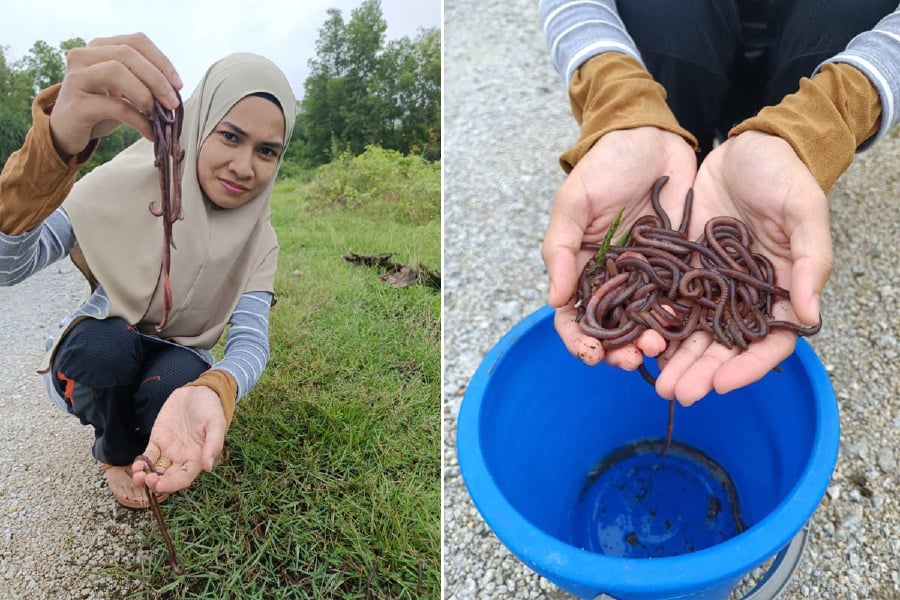KUALA TERENGGANU: The appearance of worms on the soil surface is a biological response of these invertebrates to the environment during their migration to other areas and is a normal phenomenon.
Universiti Malaysia Terengganu (UMT) Benthic Invertebrate Biology, Diversity and Ecology lecturer, Associate Professor Dr Izwandy Idris, said the migration of earthworms in large numbers or en masse is the result of the communication process of these animals that come into contact with other worms when travelling to the surface of the soil.
Referring to the incident at Kampung Merang in Setiu which was reported yesterday (January 7), he said he believed the group of invertebrates took the opportunity of the moist surface during the Northeast Monsoon to migrate.
"The worms prefer surfacing to the soil during their migration process as it is easier for them to move than when in the soil itself," he said when contacted by Bernama.
"This sort of phenomenon took place before on January 17, 2017, at Sekolah Kebangsaan Kuala Ping, Hulu Terengganu. So the public need not worry because if you had followed the previous incident, after that, nothing untoward happened."
Izwandy, who is also head of the South China Sea Repository & Reference Centre (RRC), UMT Institute of Oceanography and Environment (INOS), said there is no accurate information at the moment on why the animals migrate and why this only occurs in some places.
However, he said, it is interesting if you look at the timing of the incident in Hulu Terengganu and the one reported in Kampung Merang, which were both in January.
"Both incidents seemed to have taken place around the same period during the monsoon season. For some of these animals, their response to nature is not frequent. Sometimes, this happens once in a few years, and for sure it still happens even in places where there is no human settlement," he said, adding that his team is interested in conducting further research on the phenomenon if there is an opportunity in terms of costs and time.
At the same time, he advises villagers or anyone who witnesses incidents such as these not to kill these animals which are important to the environment.
Izwandy said these worms are very helpful in the natural cycle of the soil increasing soil aeration which is a nutrient recycling process, and according to him, it adds value to the level of soil fertility which is beneficial for agricultural activities.
Meanwhile, Sakinah Zamri, 26, said she had never seen such a large number of worms at one time in her yard in Kampung Merang, since living there for decades.
She said the incident happened when she was cleaning the yard with family members on Friday morning.
"After tracking down the cause, I found that they (worms) seemed to be racing out of the grassy area and hastily migrated to another place towards the side of the river behind the house.
"The occurrence seems to be happening until today," she said when contacted yesterday. — BERNAMA





